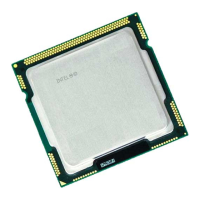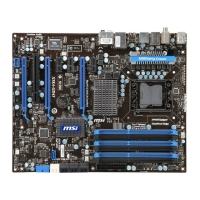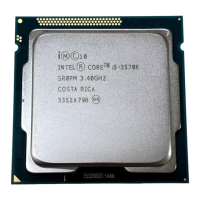i960 Processor Compiler User's Guide
7-64
7
Example 7-3 emul.c (continued)
return t.lo32;
}
else
{
if (t.hi32 == 0) /*upper32 matches lower32 sign bit */
return t.lo32;
}
overflow_error("32 bit multiply overflowed");
return t.lo32;
}
Consider the line containing the asm:
asm("emul %1,%2,%0" : "=t" (temp) : "dI" (in1), "dI" (in2));
• "emul %1,%2,%0" is the
asm-template
. The emul instruction takes
three arguments:
src1, src2, and dst. These values are provided by
the
out-list
and
in-list
.
•
"=t" (temp) is the only
output-spec
. It is the first operand, i.e.,
operand 0. The
"=t"
constraint
indicates that this operand must go
in a double word register in order for the
asm-template
to generate a
legal instruction.
•
"dI" (in1) is the first
input-spec
. It is operand 1. The "dI"
constraint
indicates that operand 1 must be in a word register, or be
a constant from 0 to 31 for the
asm-template
to generate a legal
instruction. The compiler generates the extra code as necessary to
make sure the value of
in1 matches one of the
constraints
before
the asm is generated.
•
"dI" (in2) is the second
input-spec
. It is operand 2. Again the
"dI"
constraint
indicates that operand 1 must be in a word register,
or be a constant from 0 to 31. As before, the compiler makes sure that
the operand matches one of the
constraints
before generating the
asm. In this example,
temp is declared as a local variable, and its type
(int64) has the necessary size (8 bytes) and alignment (8 bytes) to go

